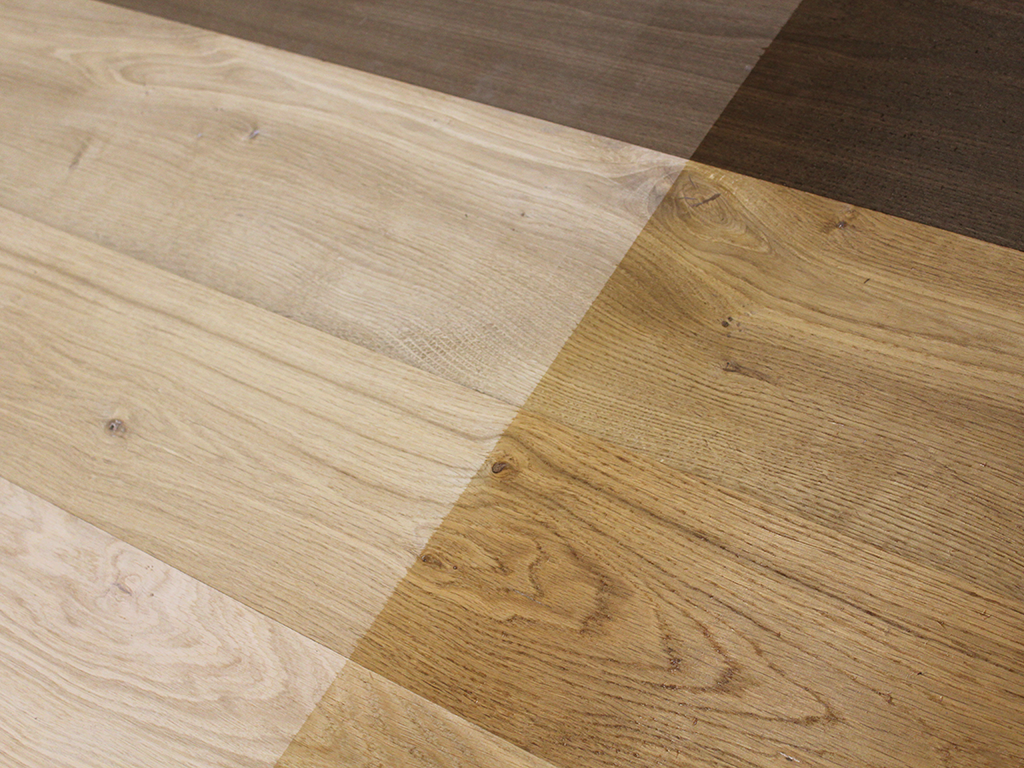FUMING / SMOKING WOOD

Fumed (aka ‘Smoked’) wood has been exposed to ammonia gas. The ammonia reacts with the natural tannins in the wood and brings out a darker color, usually a grayish-brown. Fuming was an accidental discovery, made centuries ago in England after it was noticed that Oak boards stored in a stable had darkened from exposure to the ammonia fumes from horse urine.
European Oak is the preferred species for fuming/smoking because of its high tannin content. American White Oak is sometimes fumed/smoked, but it tends to react less intensely, has more variation, and sometimes takes on a greenish color.
Because the intensity of the reaction to the ammonia depends on the tannin content of the wood, each board reacts a little bit differently from the next. This creates color variation that can be more pronounced than if the wood were not treated or colored at all. In Europe, where fuming is a traditional technique that has been used for centuries, consumers are accustomed to this variation, but in the U.S., many people are unfamiliar with it and can be a bit surprised by how much variation can be present in the floor.
For manufacturers who want to improve color consistency in a fumed/smoked floor, careful lumber sourcing can help to some degree. Oak from Western Europe, especially France, tends to have higher tannin content than Oak from Eastern Europe and the Russian Far East. Along the same longitude, wood from farther North will tend to have higher tannin content than wood from the South. When a floor has really extreme color variation, it may be that the manufacturer mixed material from far away regions. At Monarch Plank, we don’t do that. All of our Artisan’s Preferred Unfinished European Oak is ‘single-origin,’ sourced exclusively from the Burgundy region of France. In our prefinished collections, most are French Oak, and we are careful never to mix Oak from different regions into a single product.
However, no matter how carefully the lumber is sourced, variation is inevitable. Even within a relatively small forest area, tannin content can vary dramatically, and it varies quite a bit even within the same log, depending on which portion is used. See our ‘ALL ABOUT OAK’ blog post for more detailed information about tannin content and Oak sourcing.
Note that fumed/smoked Oak has a tendency to fade and amber slightly with exposure to light, similar to natural Walnut, which is a similar color. Customers who are worried about natural color change over time might consider a dark stain rather than a fumed/smoked color process, as traditional stains don't tend to fade as much as naturally-occurring colors. Of course, the downside is that traditional stains don't look this natural!
The Product Spec Sheet for each individual Monarch Plank color indicates whether or not the wood was fumed/smoked prior to finishing. Consumers looking for a floor with highly uniform color should generally be steered away from colors created with fumed/smoked wood. That said, Monarch Plank does offer fumed/smoked products that are color sorted for greater consistency. Ask your Monarch Plank Sales Representative or Monarch Plank Preferred Dealer about which fumed/smoked products have been sorted for greater consistency.
Leave a comment
Comments will be approved before showing up.




